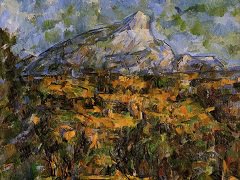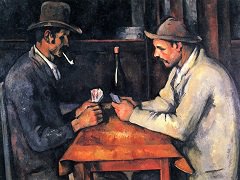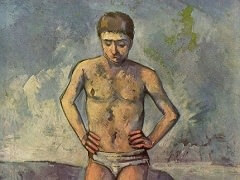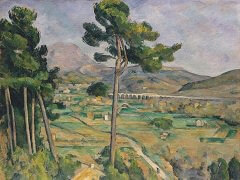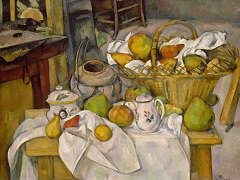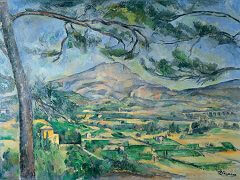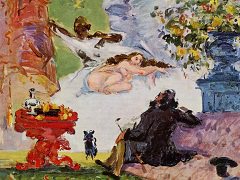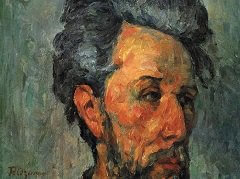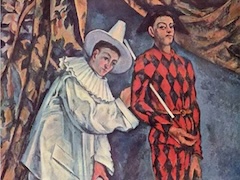Pyramid of Skulls, 1901 by Paul Cezanne
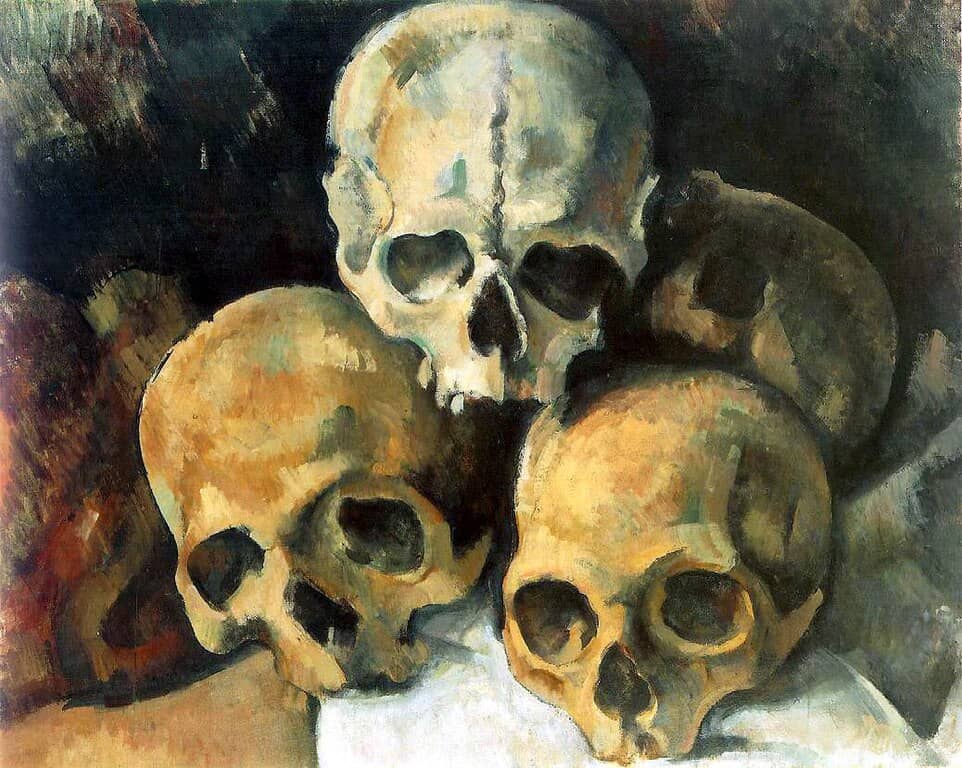
Pyramid of Skulls depicts four human skulls stacked in a pyramidal configuration. Painted in a pale light against a dark background, Pyramid of Skulls is exceptional in the artist's oeuvre, for "in no other painting did Cézanne place his objects so close to the viewer."
Working in isolation in the last decade of his life, Cézanne frequently alluded to mortality in his letters: "For me, life has begun to be deathly monotonous"; "As for me, I'm old. I won't have time to express myself"; and "I might as well be dead ." It is possible that the death of his mother on October 25, 1897 - she had been a protective and supportive influence - accelerated his meditations on mortality, a subject which had obsessed the artist since the late 1870s, but did not find pictorial form for another twenty years. Cézanne's health started to deteriorate at the same time. The dramatic resignation to death informs a number of still life paintings he made between 1898 and 1905 of skulls. These works, some painted in oils and some with watercolor, are more subtle in meaning yet also more visually stark than the traditional approach to the theme of vanitas. Pyramid of Skulls was painted at Cézanne's studio in Aix, where he worked prior to his move into the new Les Lauves studio in September 1902.
Pyramid of Skulls was painted at Cézanne's studio in Aix, where he worked prior to his move into the new Les Lauves studio in September 1902.


